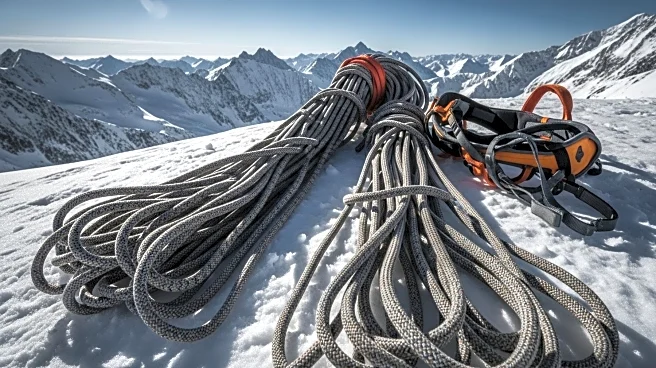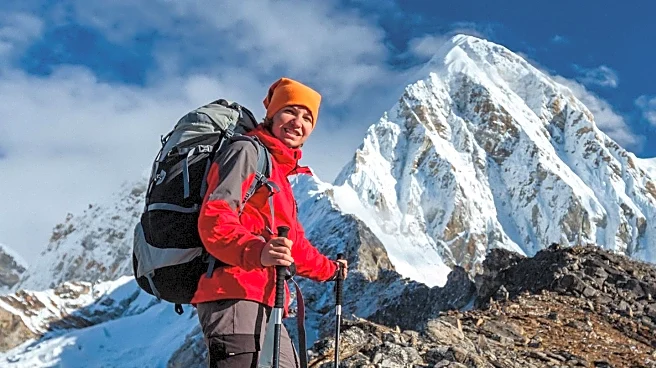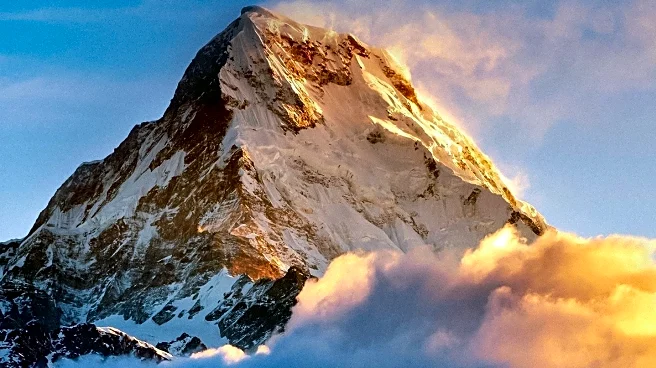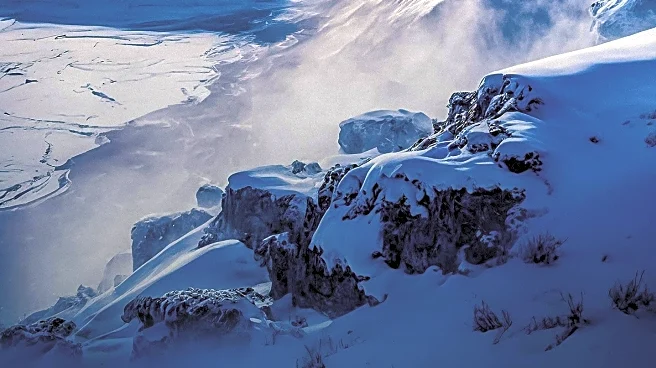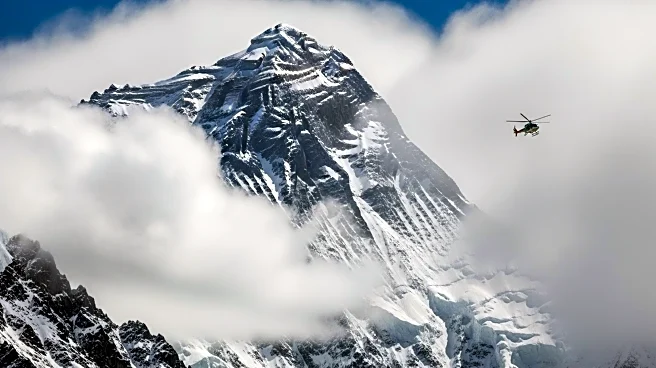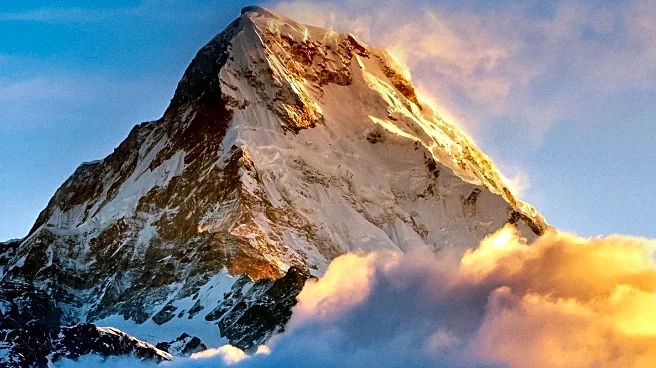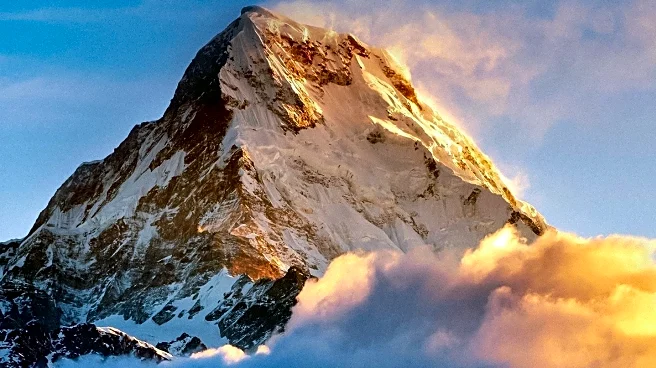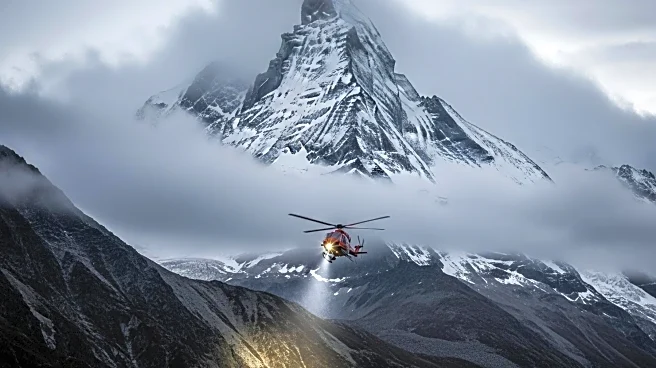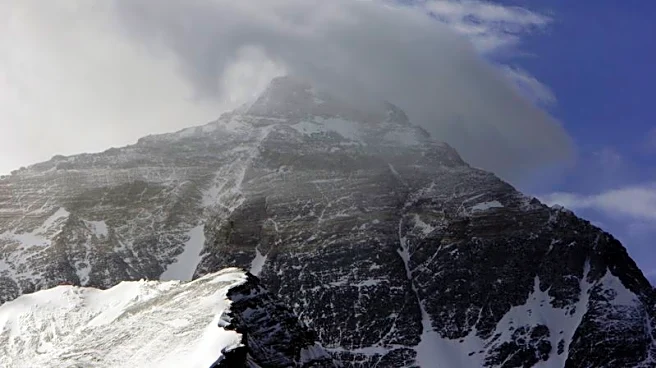What's Happening?
A rare October blizzard on the Tibetan side of Mount Everest left hundreds of hikers, including 30-year-old Feng Holiday, stranded in treacherous conditions. Feng and her group, who began their trek from Youpa Village in Tibet's Shigatze prefecture, were caught in the storm three days into their journey. The blizzard, which brought over 3 feet of snow, collapsed tents and covered trails, leaving hikers stranded at approximately 16,400 feet. Despite being well-equipped, Feng and her group had to use cooking pots to dig themselves out of the snow. The storm coincided with China's Golden Week holiday, a peak season for hiking in the region. Rescue efforts were underway, with about 350 trekkers evacuated to Qudang, while others awaited assistance.
Why It's Important?
The incident highlights the unpredictability of weather conditions in high-altitude regions like the Himalayas, even during peak hiking seasons. The blizzard not only posed immediate risks to the safety of the hikers but also underscored the challenges faced by rescue teams in such remote and harsh environments. The event could impact tourism in the region, as potential hikers may reconsider their plans due to safety concerns. Additionally, it raises questions about the preparedness and response strategies of local authorities in handling such emergencies.
What's Next?
Rescue operations are expected to continue as authorities work to ensure the safety of all stranded hikers. The incident may prompt a review of safety protocols and emergency preparedness for trekking in the Himalayas. Local tourism operators might also reassess their offerings and safety measures to reassure potential visitors. The event could lead to increased collaboration between local authorities and international rescue organizations to improve response times and effectiveness in future emergencies.
Beyond the Headlines
The blizzard serves as a reminder of the broader impacts of climate variability, which can lead to unexpected weather patterns even in regions known for stable conditions during certain times of the year. This could have long-term implications for the tourism industry in the Himalayas, as well as for local communities that rely on tourism for their livelihoods. The incident also highlights the importance of respecting natural environments and the inherent risks of adventure tourism.

